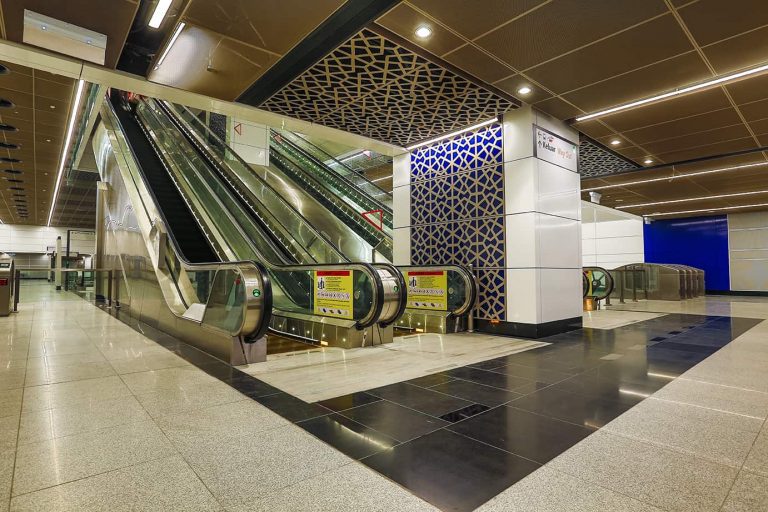
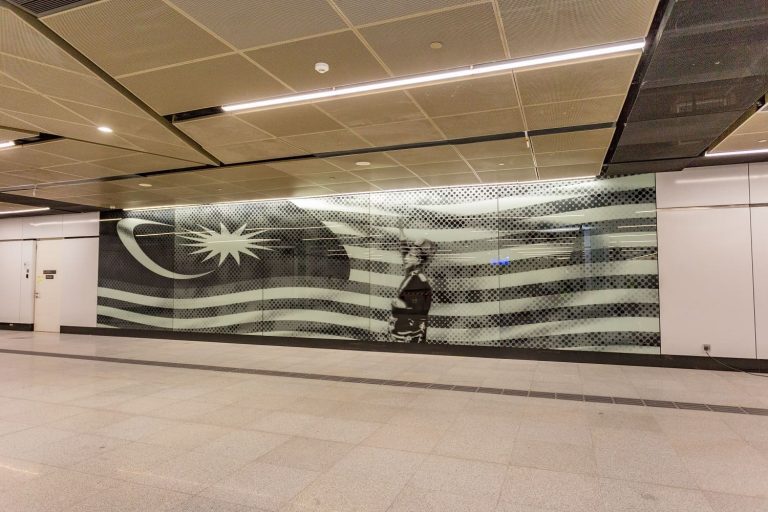
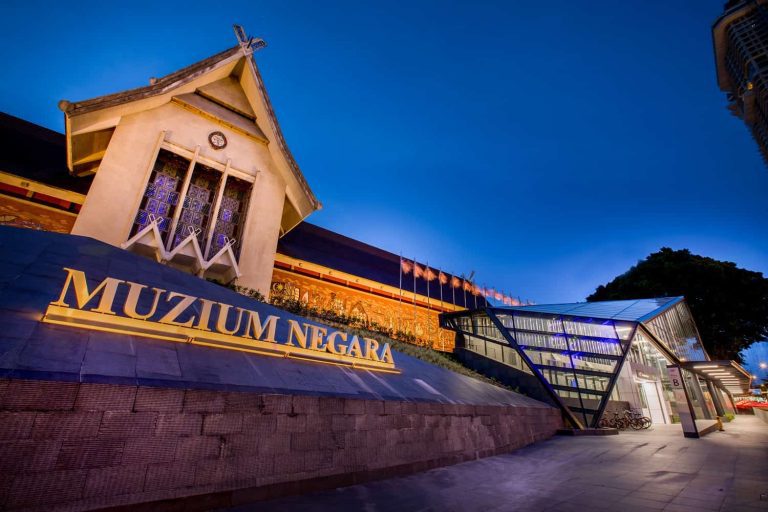
Underground Stations
Each of the MRT Putrajaya Line underground stations follow a unique theme and design style. The proposed design concepts cover a range of criteria from preserving a traditional rustic feel, reflecting tidal rhythms, promoting well-being, vibrancy, pulse of life, discovering culture, with moulding forms inspired by nature and featuring a streamlined flow.
Underground stations will be constructed using either the “top-down” or “bottom-up” method depending on the location of the station. The top-down method sees the top slab first being constructed after which the permanent structure is constructed as the excavation progresses downwards to the base slab. Conversely the “bottom-up” method requires the whole station box to be excavated first, followed by the construction of the station’s interior structure, from the base slab upwards.
Construction Methods
Top-down Construction
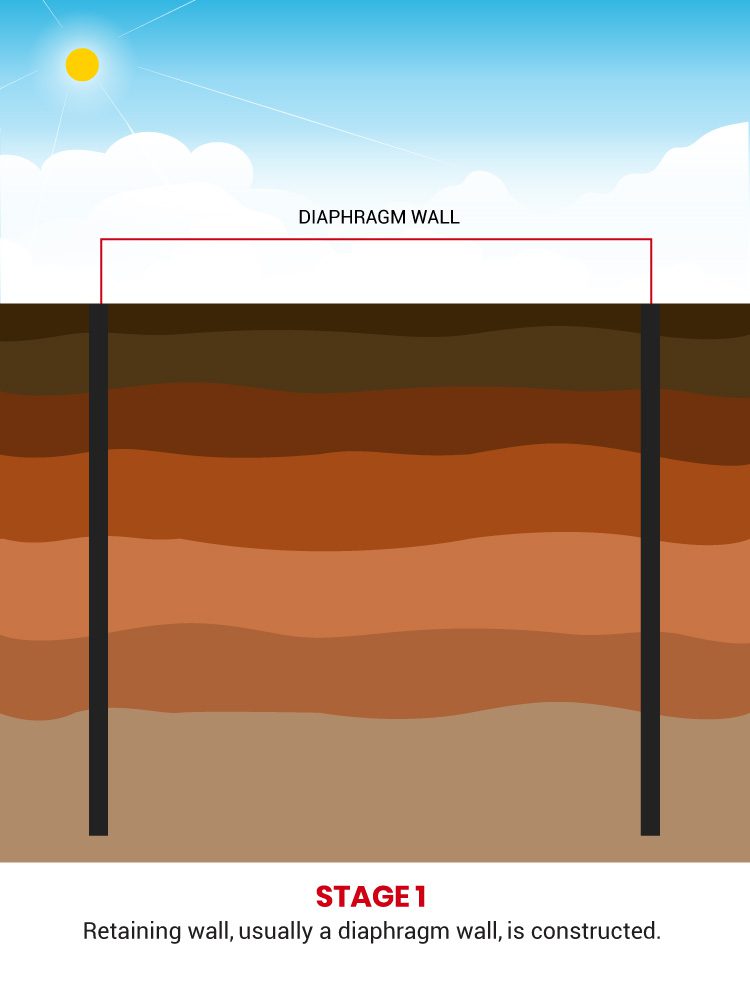
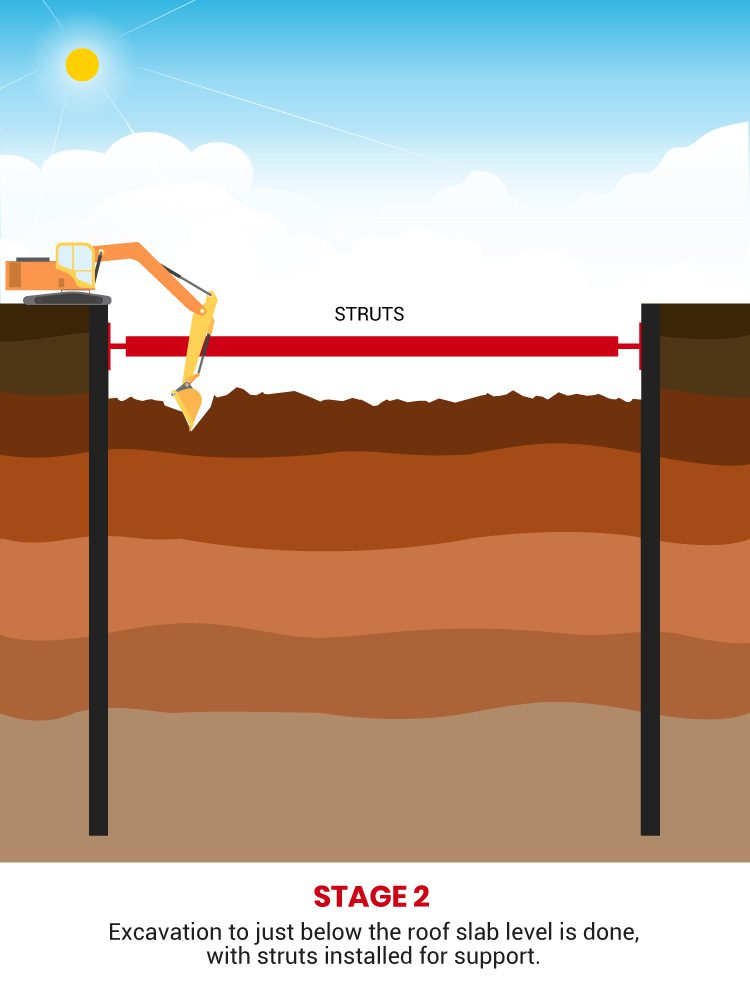
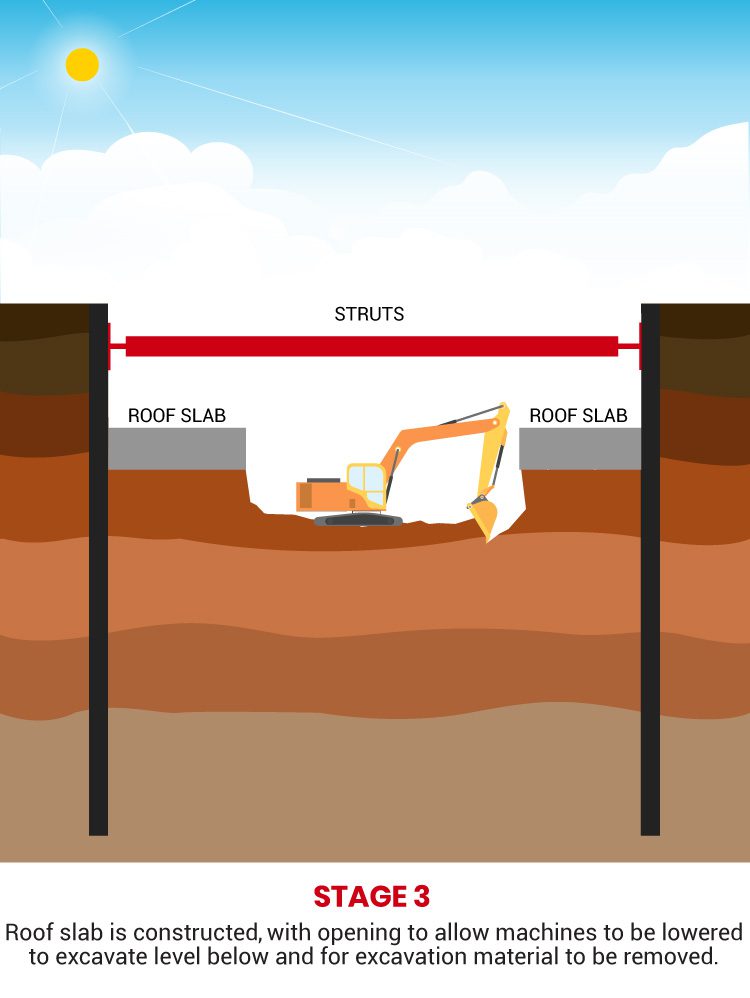
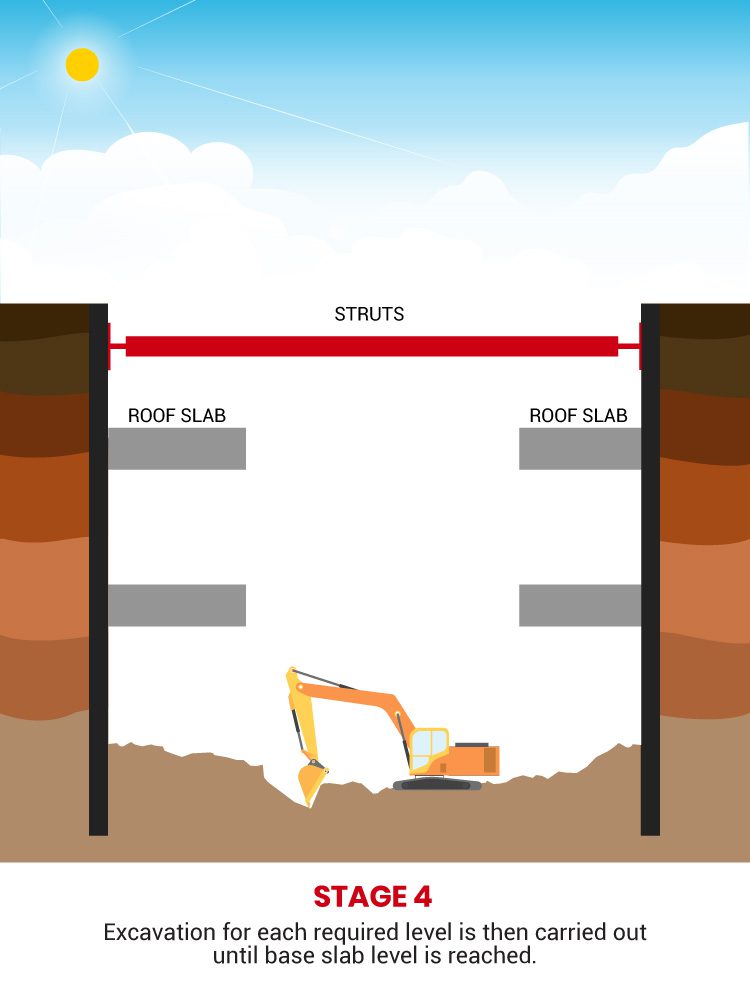

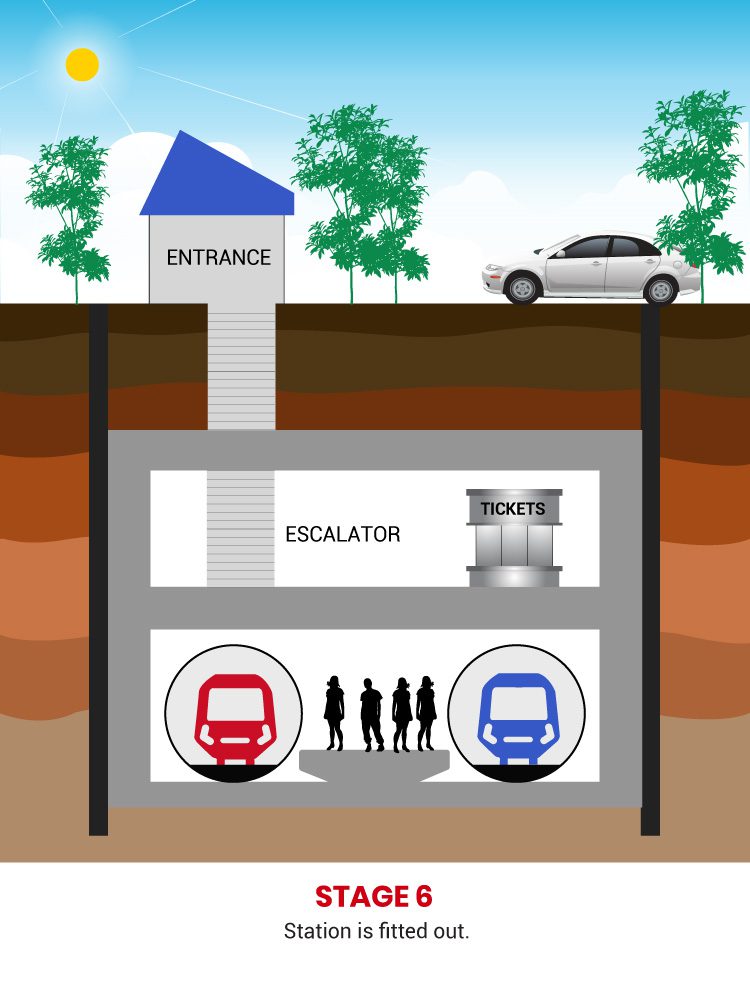
For areas that are heavily built-up, with tall buildings around and limited space to divert roadways or utilities, the top-down method is a safer option. Here, soil movement is limited as the permanent slabs are constructed to act as the rigid earth retaining system.
This construction method builds the permanent structure components of the basement along with excavation from the top to bottom. By employing this method, basement floors are constructed as the excavation progresses.
The top-down method is mainly used for the two types of urban structures; tall buildings with deep basements or underground structures for example car parks, underpasses and underground stations.
The top-down method is ideal for cavernous excavation projects where soil movement must be minimised. This approach is ideal for Klang Valley’s extreme geology.
The most obvious benefit would be the savings in the overall construction time. Typically, construction begins with the installation of the retaining wall, then proceeding with load-bearing elements that will carry the future super structure. Basement columns are constructed before any excavation or load bearing elements take place.
Bottom-up Construction
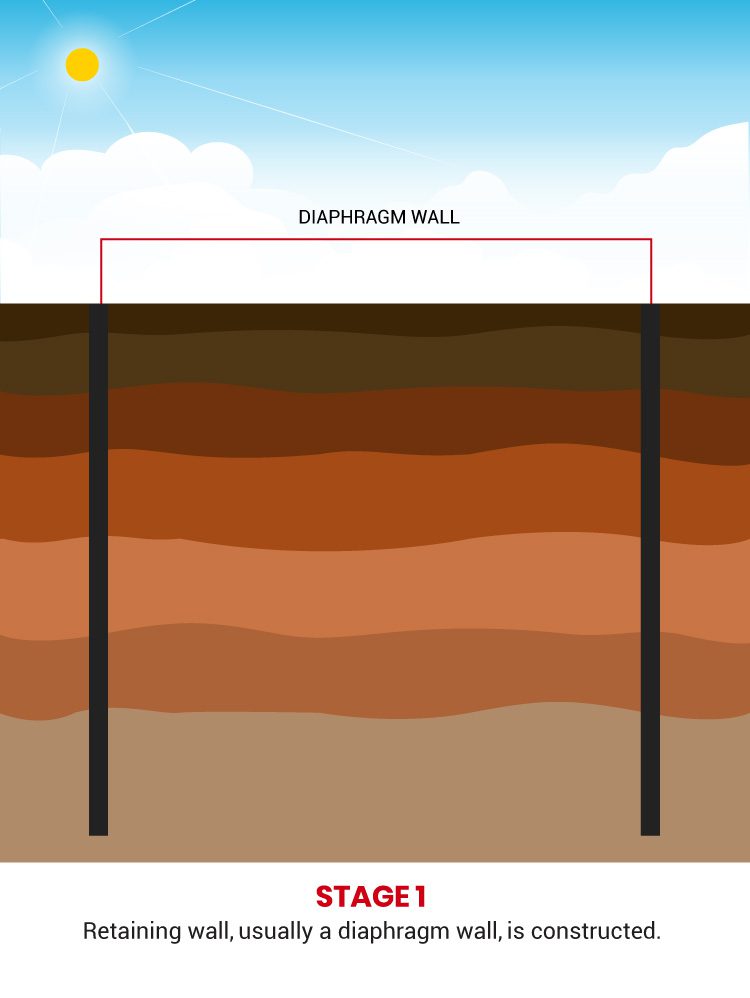
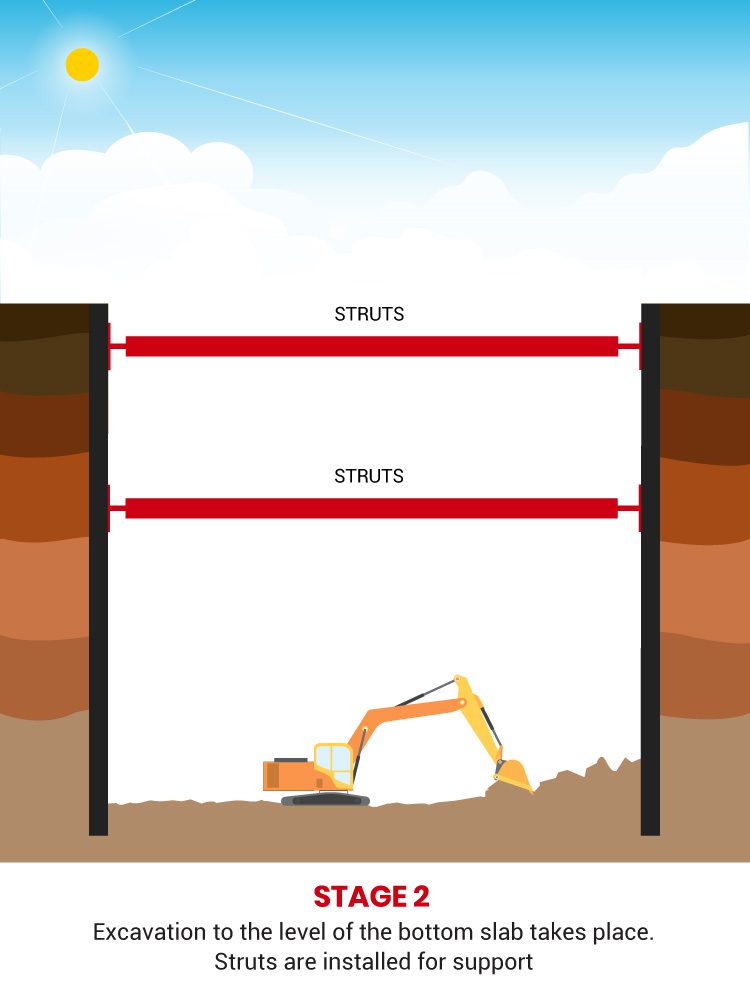
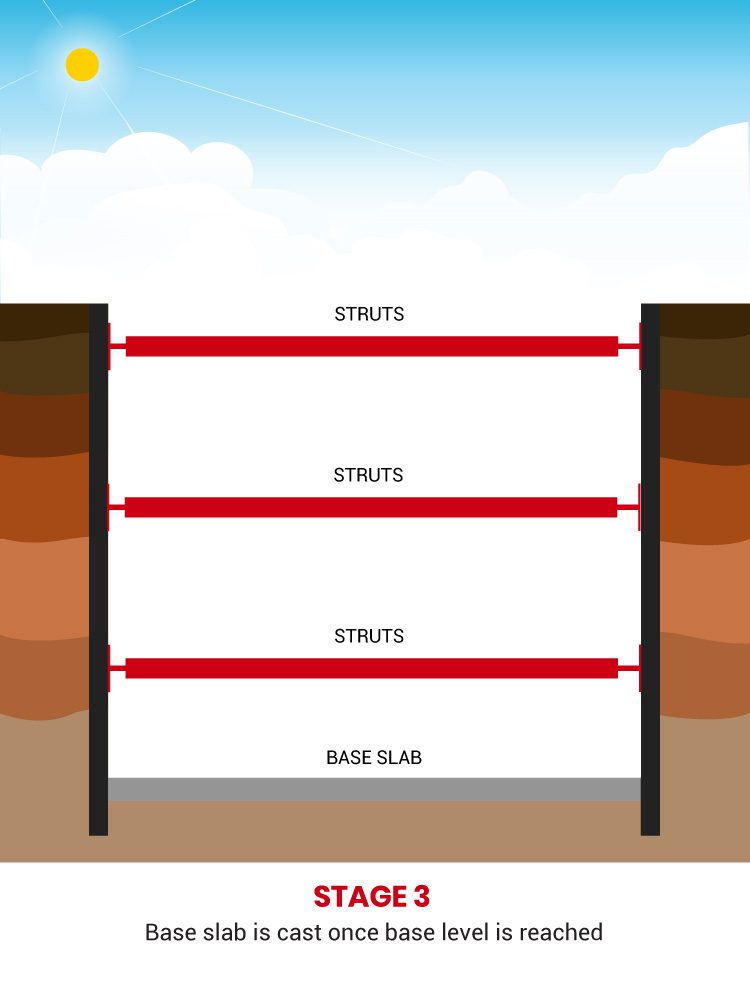
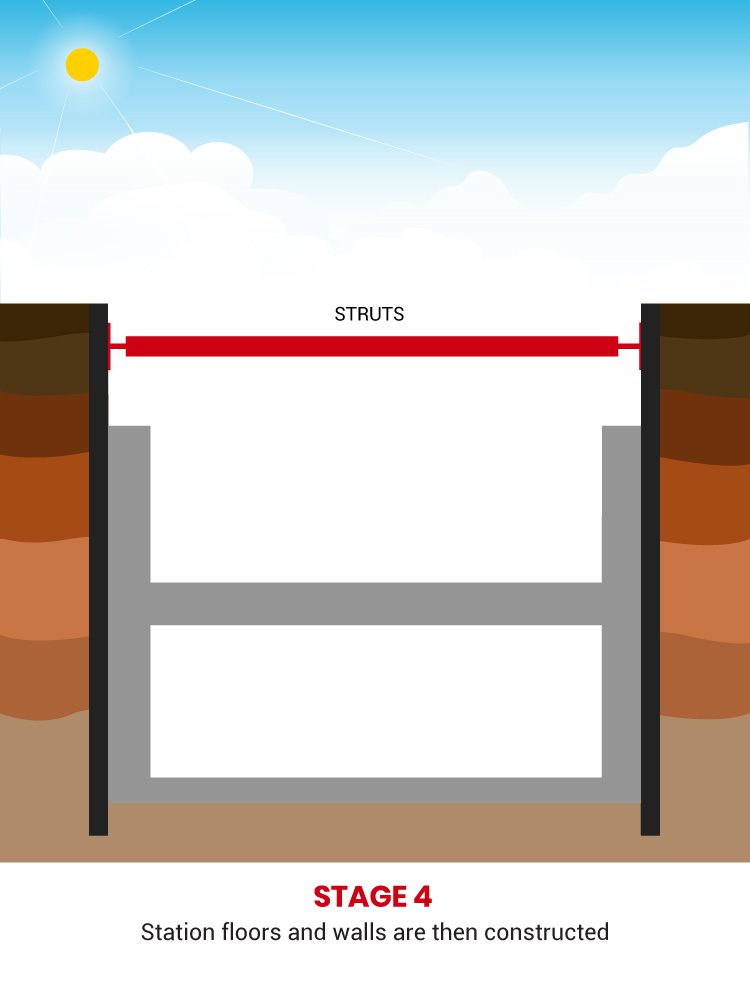
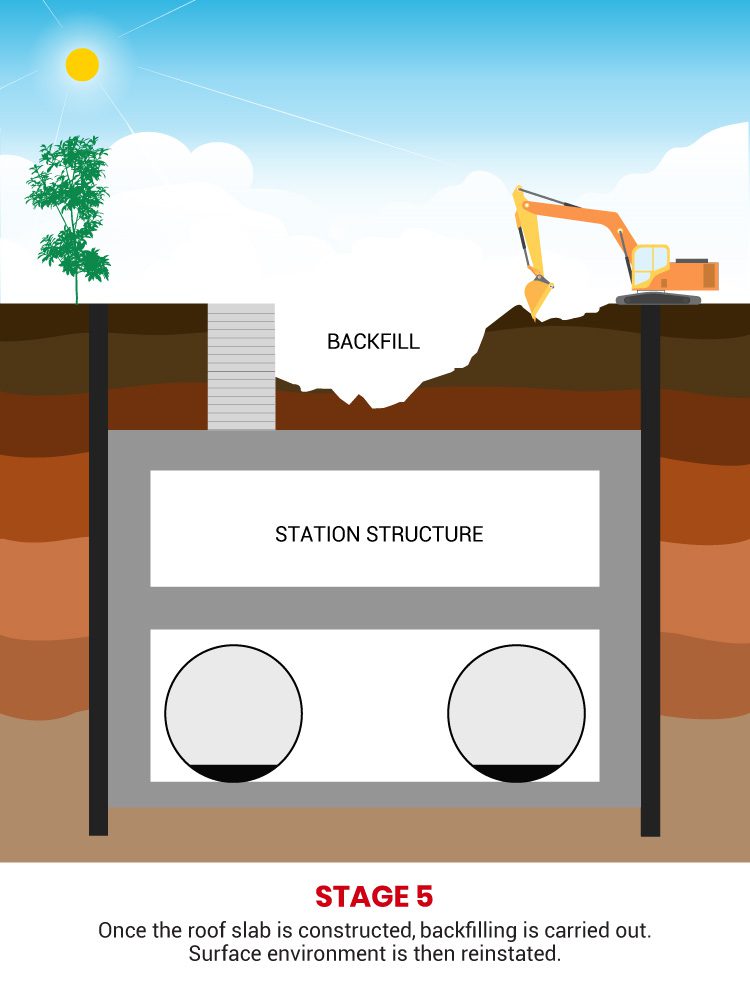
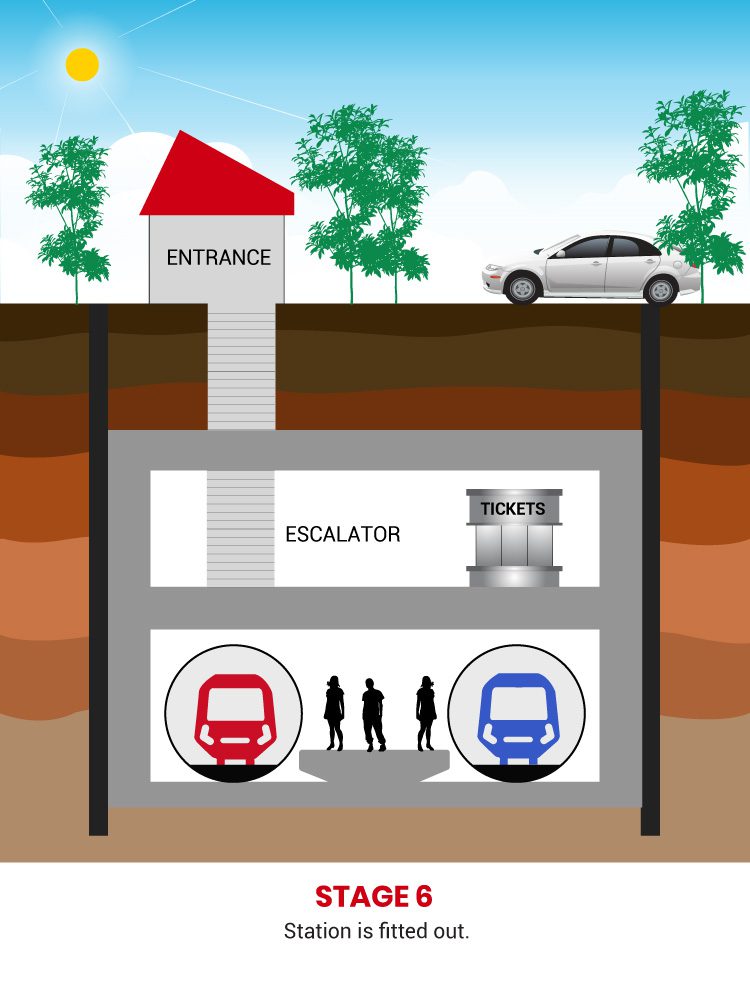
The bottom-up methodology, as explained earlier, refers to the technique of constructing underground structures starting from the bottom and working upwards.
Conventionally, buildings with underground basements are built by bottom-up method where substructure floors are constructed sequentially from the lowest level basement to the top floor of the superstructure. A trench is excavated from the surface where the tunnel is constructed and then the trench is backfilled and the surface is methodically restored afterwards. The trench could be formed using open cut methods or with vertical faces using an excavation support system.
In bottom-up construction the tunnel is completed before it is covered and the surface reinstated.
This method comes with several benefits. One of them would be that waterproofing can be applied to the outside surface of the structure. Also, the interior of the excavation makes it easy accessible for construction equipment and the delivery, storage and placement of material. This method also allows for supplementary drainage system to be installed, outside the structure, to channel water, or divert it away from the structure.
